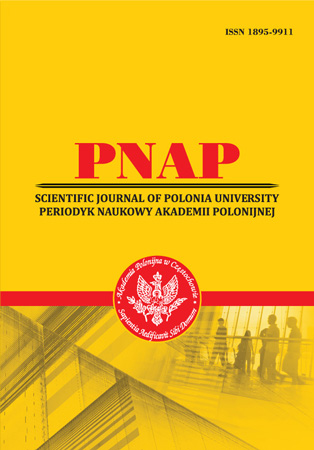FASCINATION AS A SUPPORTIVE STRATEGY OF POSITIVE COMMUNICATION CLIMATE
Abstract
The article investigates the phenomenon of fascination in the context of modern approach to interpersonal communication in cooperative and nonviolent way. Effectiveness of communication process mainly depends on the quality of interpersonal relations, the degree and quality of emotions, the willingness of communication partners to adjust to verbal contact. We shall undertake linguistic analysis of fascination as one of discursive strategies. Fascination is defined as the person’s quality to be liked via peculiar semiotic way of self-presentation, aimed at minimizing unpleasant emotional tone in communication and maximizing positive communication climate. According to fascination’s nature to enchant, charm, express sympathy, elicit negative emotions and make positive impression, it can be stated that positive communication climate is created by special fascinating way of communication. Such kind of communication is made up of a system of verbal and nonverbal components and connections between the fascinator and the object of fascination. As fascination is able to change emotional state and create positive tone in interpersonal relations, we consider fascination as supportive strategy of positive communication climate. The purpose of our study is to explore fascination as supportive strategy in relation to making positive communication climate.
References
2. Beebe, S., Beebe, S., & Redmond, M. (2007) Interpersonal communication: Relating to others. Boston: Allyn & Bacon.
3. Bright F. (1988) Singular Women. New York: Bantam Books,. 354 p.
4. Burgoon J.K., Buller D.V., Woodall W.G. (1996), Nonverbal Communication. The Unspoken Dialogue. The McGraw-Hill Companies, INC, 522 p.
5. Costigan, J., & Schmeidler, M., (1984) Exploring supportive and defensive communication climates. In J. W. Pfeiffer and L. D. Goodstein (Eds.), The 1984 annual: Developing human resources (pp. 112-118). San Diego: Pfeiffer.
6. Deetz S. (1986) Managing Interpersonal Communication. New York: Harper&Low, 1986. 242 p.
7. Devito, J. (2008) Interpersonal messages: Communication and relationship skills. Boston: Allyn & Bacon.
8. Dijk van T.A. (2006) Discourse and Manipulation. Discourse & Society, 17(2), 359-383, www.discourses.org/OldArticles/Discourse%20and%20manipulation.pdf.
9. Dijk van T.A. (1982) Studies in the Pragmatics of Discourse. The Hague: Mouton de Gruyter. 331 p.
10. Duck S. (1998) Human Relationships. London: Sage Publications. 392 p.
11. Dumont T. (2015) The Art And Science Of Personal Magnetism. The Secret Of Mental Fascination/Theron Q. Dumont. New York: Digiread Publishing, 87 p.
12. Fenn G. M, The Golden Magnet. http://www. readbookonline.net/read/41615/87275/
13. Fisher A., Adams K. (1994) Interpersonal Communication. Pragmatics of Human Relationships. McGraw-Hill, Inc., Р. 270.
14. Goffman E. (1967) Interaction Ritual: Essays on Face-to Face Behaviour. Garden City, N.Y.: Anchor Books, 33 p.
15. Golden A. (2005) Memoirs of A Geisha. New York: Randon House. 434 p.
16. Goleman, D. P. (1995) Emotional intelligence. New York: Bantam Books.
17. Graham L., Kenderick S., Gordon L. (2008) Summer Seductions. New York: Harlequin Books. 742 p.
18. Hogshead S. (2010) How to Fascinate. New York: Harper Collins Publishers. 156 p.
19. Ickes W. (1991) Empathetic Accuracy. Journal of Personality. Vol. 61. № 4. P. 12–13.
20. Kidd F. (1981) Passionate Stranger / Flora Kidd. London: Mills & Boon Limited, 187 p.
21. Knapp M. L., Hall J. A. (2002) Nonverbal Communication in Human Interaction. Wadsworth. Thomson Learning, USA. 482 p.
22. Lindsey J. (2005) Captive Bride. New York: Avon. 400 p.
23. Littlejohn S. W. (1989) Theories of Human Communication. Belmont: Wadsworth Publishing Company. 315 p.
24. Onyekwere, E. O., Rubin, R. B., & Infante, D. A. (1991), Interpersonal perception and communication satisfaction as a function of argumentativeness and egoinvolvement. Communication Quarterly, 39(1), 35-47.
25. Sallis S, (1991) An Ordinary Woman. London: Gorgi Books. 475 p.
26. Sidnell, J. (2010) Conversation analysis: An introduction. West Sussex, UK: WileyBlackwell.
27. Ting-Toomey, S. (1994) The challenge of facework: Cross-cultural and interpersonal issues. Albany: State University of New York Press.
28. Vangelisti, A. L., & Knapp, M. L. (1990) Conversational narcissism. Communication Monographs, 57(4), 251-275.
29. Wilmot, W. W., & Hocker, J. L. (2001) Interpersonal conflict. New York: McGraw-Hill.
30. Yankelovich, D, (1999) The magic of dialogue: Transforming conflict into cooperation. New York.
Abstract views: 397 PDF Downloads: 220







